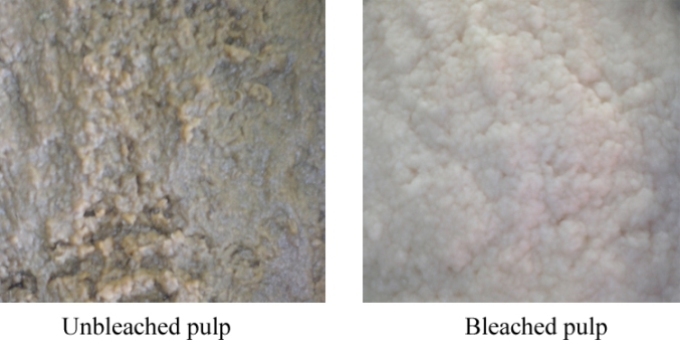The objective of pulp bleaching is to produce white pulp. Unbleached pulps are not suitable for manufacturing of high grade of white paper. Since all the processing pulp brightness is very low, especially Kraft pulp. The sulfite pulping process produces comparatively bright chemical pulps, while the others pulping process such as kraft, soda and semichemical are produce quite dark pulp. The approximate brightness of unbleached kraft pulp range is 15-30, whereas sulfite pulp range is 50-65. In modern world most of the pulp is manufactured by Kraft pulping process. The pulp is not only made of cellulose and hemicelluloses, but it also contains some impurities which are never completely removed in the pulping process. Inherently, cellulose and hemicelluloses are white in color and don’t contribute to pulp colorization. Impurities as like lignin, colored organic matter are predominantly impart color to the pulp. Generally the chromophoric groups of lignin are responsible for this.
Two principal reactions are occurred during in the chemical bleaching of pulps. One type of reactions is to solubilization the coloring matter and almost totally removes them. The other type of reactions is to changing the coloring matters to a colorless form by selectively destroy some of the chromophoric groups which is as stable as possible to color and heat.

Oxidative mechanisms are believed to convert part of the lignin’s phenolic groups to quinone-like substance that are known to absorb light. Heavy metal ions (e.g., iron and copper) are also known to form colored complexes with the phenolic groups. Extractive materials can contribute to the color of mechanical pulps made from resinous woods.
The pulp brightness is measured by its ability to reflect monochromatic light in comparison to a known standard. To measure the pulp brightness two most widely common processes are Elrepho and ISO method. In Elrepho method the used instrument is Zeiss Elrepho reflectance meter which provides a diffuse light source and standard reflecting surface is magnesium oxide block or snow. If a surface reflect all the applied monochromatic light colors in the same proportions is said to be pure white such as pure cellulose will reflect normal light in its true proportions. Fully bleached sulfite pulps can test as high as 94% Elrepho.
The principal pulp bleaching agents are chlorine, chlorine dioxide, hypochlorite, peroxide, chlorite, oxygen and ozone.
Definition of pulp bleaching: Removal of colored substance or alter the coloring material from chemical pulp to increase its brightness and cleanliness, without deleterious effect on the physical and chemical properties of the pulp.

In D⁰ bleaching do I need to add NAOH to increase the pH or should I leave it at pH 3.